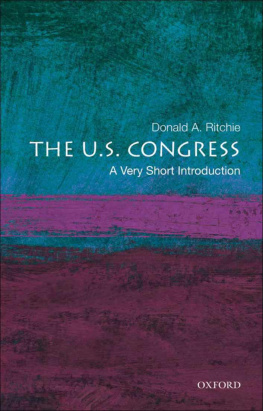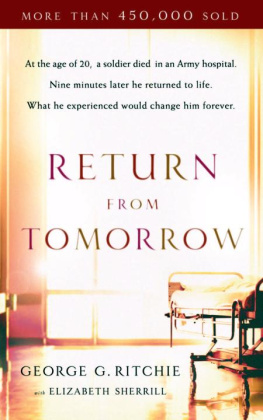Ritchie - Early Bicycles and the Quest for Speed
Here you can read online Ritchie - Early Bicycles and the Quest for Speed full text of the book (entire story) in english for free. Download pdf and epub, get meaning, cover and reviews about this ebook. genre: Romance novel. Description of the work, (preface) as well as reviews are available. Best literature library LitArk.com created for fans of good reading and offers a wide selection of genres:
Romance novel
Science fiction
Adventure
Detective
Science
History
Home and family
Prose
Art
Politics
Computer
Non-fiction
Religion
Business
Children
Humor
Choose a favorite category and find really read worthwhile books. Enjoy immersion in the world of imagination, feel the emotions of the characters or learn something new for yourself, make an fascinating discovery.
- Book:Early Bicycles and the Quest for Speed
- Author:
- Genre:
- Rating:5 / 5
- Favourites:Add to favourites
- Your mark:
- 100
- 1
- 2
- 3
- 4
- 5
Early Bicycles and the Quest for Speed: summary, description and annotation
We offer to read an annotation, description, summary or preface (depends on what the author of the book "Early Bicycles and the Quest for Speed" wrote himself). If you haven't found the necessary information about the book — write in the comments, we will try to find it.
Ritchie: author's other books
Who wrote Early Bicycles and the Quest for Speed? Find out the surname, the name of the author of the book and a list of all author's works by series.
Early Bicycles and the Quest for Speed — read online for free the complete book (whole text) full work
Below is the text of the book, divided by pages. System saving the place of the last page read, allows you to conveniently read the book "Early Bicycles and the Quest for Speed" online for free, without having to search again every time where you left off. Put a bookmark, and you can go to the page where you finished reading at any time.
Font size:
Interval:
Bookmark:


High-wheel racing in Winona, Minnesota, probably in the late 1880s. The photo (lightly cropped) is by Chas. A. Tenney, of Winona. Winona is located about 100 miles southeast of Minneapolis, on the Mississippi River across from Wisconsin, just north of La Crosse, and must have been an outpost of bicycle racing when the photo was taken. The photograph shows a relatively primitive stage of the sport, with a flat, dirt track, and a grain elevator in the background. Nevertheless, all the elements of the early sport are there, with a small grandstand and officials lined up by the side of the track.
Second Edition

McFarland & Company, Inc., Publishers
Jefferson, North Carolina
An earlier version of this book was published by the author in 2011 as Quest for Speed: A History of Early Bicycle Racing 18681903
LIBRARY OF CONGRESS CATALOGUING DATA ARE AVAILABLE
BRITISH LIBRARY CATALOGUING DATA ARE AVAILABLE
e-ISBN: 978-1-4766-3046-5
2018 Andrew Richie. All rights reserved
No part of this book may be reproduced or transmitted in any form or by any means, electronic or mechanical, including photocopying or recording, or by any information storage and retrieval system, without permission in writing from the publisher.
Front cover: Track officials can be seen gathered beside competitors in this undated photograph, probably at the start of an N.C.U. championship event from 1885 or 1886. G.L. Hillier in white, probably H.O. Duncan at center (authors collection).
McFarland & Company, Inc., Publishers
Box 611, Jefferson, North Carolina 28640
www.mcfarlandpub.com
I could not have brought the first edition (2011) to press without the help of Rob van der Plas, John Weiss, Christian Wignall, Lorne Shields and Teresa Fagan
For this edition, once again, thanks and appreciation to all the people in the bicycle history world from whom I have benefitted with a constant exchange of photocopies, photographs and email discussion. Especially helpful has been the ongoing exchange of information with members of the International Cycling History Conference and the Veteran Cycling Club, whose combined knowledge and research expertise now constitutes a body of informed opinion which someone who tackles any aspect of the history of the bicycle neglects at their peril.
Early Bicycles and the Quest for Speed is a social and technical history of the development of bicycle racing and bicycle technology between about 1868 and 1903, in Britain, France and the United States. It follows the earliest velocipedes from 1869 into the 1880s, the period of the classic high-wheel bicycle, and then into the boom era of the safety bicycle and the pneumatic tire of the mid1890s, and the rise of modern, international road and track racing, including the first Olympic Games. It also explores cycling as recreational, touring and utility riding in the same period.
It is not an economic or an industrial history per se, but a broader social account that argues that there was a symbiotic relationship between the growth of the sport and the extraordinary expansion of the bicycle industry itself. Each needed the other as design ideas, technological needs and customer tastes changed. Product reviews and the correspondence columns of the specialized cycling press give ample evidence of this exchange of ideas, as did the discussion in the general press. The new bicycle was constantly in the news.
The bicycle trade created an annual consumer marketing pattern, where novelties were first introduced at the spring shows. Ultimately, when records and championships were at stake, effectively achieved and constantly sustained speed was the most important criteria of success, under varied road and track conditions. Racing and setting place-to-place records between towns or other landmarks were crucial parts of the evolution of man-powered machines right from the beginning. At first the horse, or the speed of horse and carriage, were the standards to be met. The railways were of course faster, but were also expensive.
The book is crammed full of documents, technical information, details of the formation of clubs and national and international governing bodies, the origins of national and world championships, insights into the role of the press, and the biographies of bicycle racers and the most significant personalities from the sport, the industry and the press. It also raises questions about understanding the evolution of bicycle technology, and examines changing styles and fashions. From a technological viewpoint, the account in this book situates the rise of the bicycle industry as a precursor to modern automobile transportation. It is directed at anyone who seeks to understand the foundations of modern cycling in the late 19th century, and the early development of what is still an underresearched modern sport.
***
I researched and wrote a short history of cycling called King of the Road, published in 1975. This was my first encounter with the extensive literature of the history of cycling. It was in the days of what came to be known as the first modern bike boom, of Tom Cuthbertsons Anybodys Bike Book and the first Bell helmets. An oil shortage stimulated the 1970s revival of the European 10-speed bicycle in the United States, and at the Missing Link in Berkeley, where I worked for a time, Suntour alloy rear derailleursJapanesewere being fitted in place of the plastic Simplex ones, made in France, which broke much too easily.
The European manufacturers with a foothold in the American market were being challenged by the Japanese and Taiwanese, and mountain bikeswhich would quickly revolutionize the bicycle industrywere being invented in Marin County, California. We didnt recognize it from a historical perspective at that moment, but we were at a turning point, the beginning of what was to become a global cycling revolution. American manufacturers would play a vastly increased role in the world bicycle market.
I started cycling in about 1960, as a teenager, riding in South London and in the Kent and Surrey lanes. I was to discover later that since the 1880s south London had been a hotbed of cycling, and there were still dozens of clubs and specialist bike shops in the 1960s.
King of the Road can still be found for a few dollars. All in all, its worn reasonably well, but in places the text is quite dated. I did much of the research in the old circular British Museum Reading Room and at the Cyclists Touring Club Library, then in Godalming, Surrey. It was my first exploration of the cycling press and the wider literature of cycling as a sport, a leisure pursuit and a developing technology. When I first approached the late Derek Roberts, the founder and editor of The Boneshakerwhich has since become the leading journal of serious cycling historyfor guidance, he gave me a short lecture about bad bicycle history books and the need for historical accuracy, which was his quest. As a message, this stayed with me. Its served me well in exploring and using the cycling literature of the last 150 years.
In retrospect,
Next pageFont size:
Interval:
Bookmark:
Similar books «Early Bicycles and the Quest for Speed»
Look at similar books to Early Bicycles and the Quest for Speed. We have selected literature similar in name and meaning in the hope of providing readers with more options to find new, interesting, not yet read works.
Discussion, reviews of the book Early Bicycles and the Quest for Speed and just readers' own opinions. Leave your comments, write what you think about the work, its meaning or the main characters. Specify what exactly you liked and what you didn't like, and why you think so.















